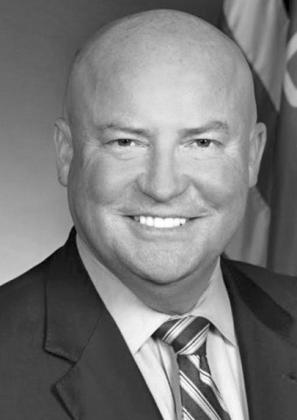There has been a great deal of news coverage regarding Oklahoma’s refusal to accept federal fundstosupport children who qualify for free and reduced school lunches during the summer months.
The fact is this failure will leave many Oklahomachildrenhungry.According to the Food Research & Action Center, the nation’s top private entitytrackinghungerissuesacross the states, because of this refusal, more than 403,000 eligible Oklahoma children will not receive an Electronic Benefits Transfer (EBT) card for their families to receive approximately $40persummermonth when the children are not in school.
The funding would have totaled an estimated $48,360,000 in benefits which would have been distributed to our state. No matter how you describe it, that is almost $50 million that could have been pumped into Oklahoma’s economy by being spent in local grocery stores. It is our tax dollars we paid to Washington that will now go to some other state.
Arguments were made that churches and nonprofit organizations should meet the needs of hungry individuals and do more to reduce government assistance, but the needs are growing faster than support allows. Many of these private organizations operate on grants and private donations, and giving is just simply down, which puts a tremendous burden on those who can donate or volunteer, especially during the daytime hours.
Some might point fingers and complain that these enrollment numbers are too high, but it is based on the income of families, just like Medicaid and Supplemental Nutrition and Assistance Program (SNAP). Data reported by KOSU show that Oklahoma had a poverty rate of 15.7% compared to the national poverty rate of 11.5%, leaving the state with the eighth highest poverty rate in the country.
Additionally, 1 in 5 Oklahoma children were living at or below the federal poverty level in 2022, which based on family size, is $14,580 for a single individual and $30,000 for a family of four. Oklahoma average income earnings are $24.49 per hour, according to Forbes Advisor, or about $50,940 annually.
Just so you know these amounts, according to the Economic Policy Institute, the average annual cost of infant care in Oklahoma is $8,576, or $715 per month per child. Childcare for a 4-year-old costs about $6,605, or $550 each month. Oklahoma one of 33 states and the District of Columbia where infant care is more expensive than college.
Additionally, the median rent index for a two-bedroom apartment in Oklahoma City today is $1,155, according to the March 2022 rent report from Apartment List. That is more than 25% higher than the November 2020 rate used to determine the cost of living.
So, for a single parent paying for daycare for two children and rent, that is nearly $30,000, well above the poverty level for three. That leaves little if any money for food or other necessities, such as health insurance. This is why these dollars were desperately needed.
There are many children in the summer months who can participate in summer congregate feeding programs. Still, summer meals reach only a fraction of the children who rely on free and reduced-price school meals during the school year. A big reason for that is that Oklahoma is a very rural state with manypeoplelivingoutsidethehighest population density areas. It is impossible for many children living outside town limits to travel to congregate feeding sites where food is prepared daily. Additionally, Feeding America estimates that SNAP provides nine times the number of meals provided by the overall food bank network. That is what made theEBTcardsolutionamuchbetter way to reach every child.
The Oklahoma Institute for Child Advocacy (OICA) certainly hopes the state will reconsider this rejection of funds to support children. We encourage the Legislature to act this year to provide relief to the struggling families lawmaker represent.
The Oklahoma Institute for Child Advocacy was established in 1983 by a group of citizens seeking to create a strong advocacy network that would provide a voice for the needs of children and youth in Oklahoma, particularly those in the state’s care and those growing up amid poverty, violence, abuse and neglect, disparities, or other situations that put their lives and future at risk. Our mission statement: “Creating awareness, taking action, and changing policy to improve the health, safety, and well-being of Oklahoma’s children .

